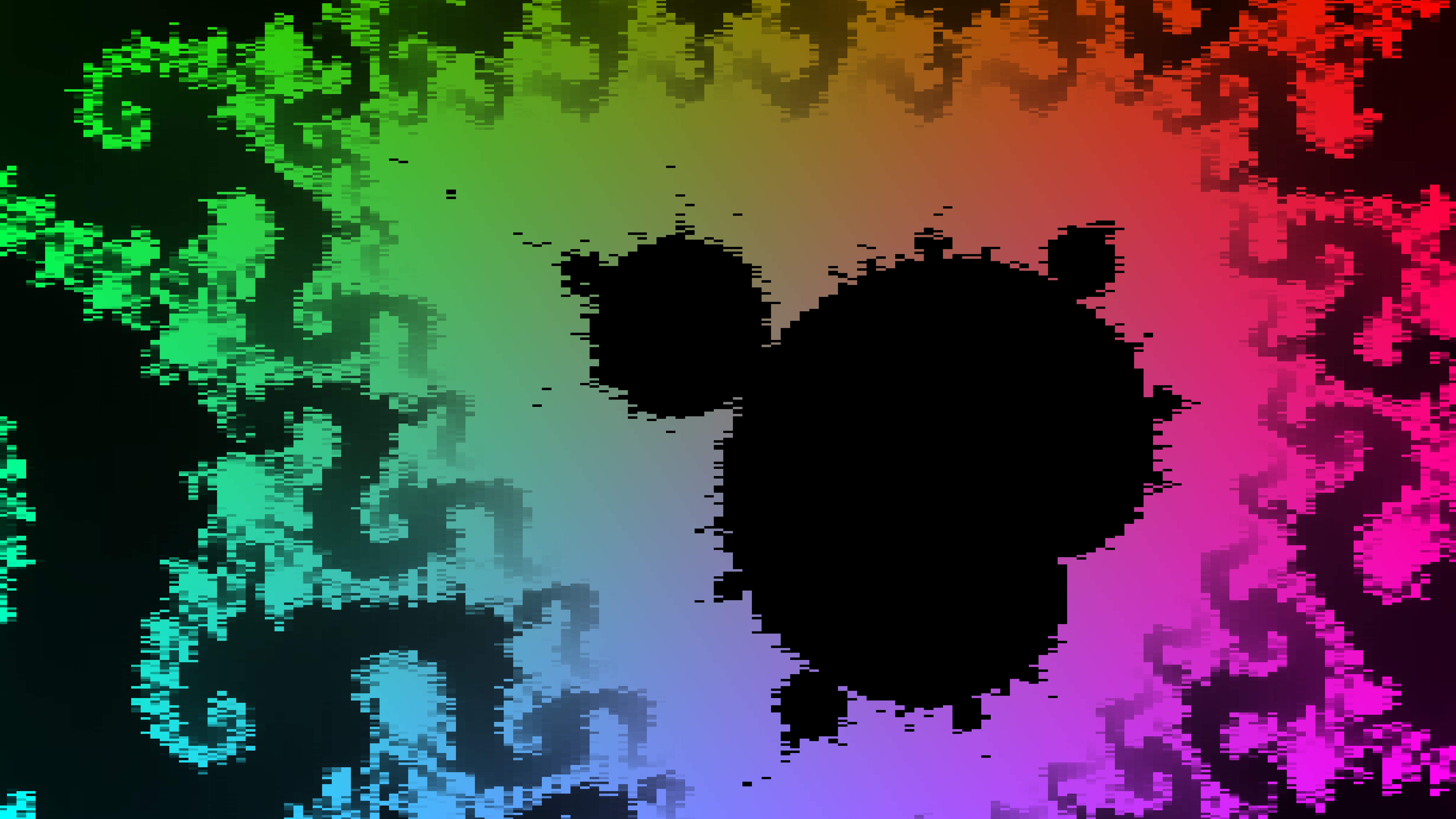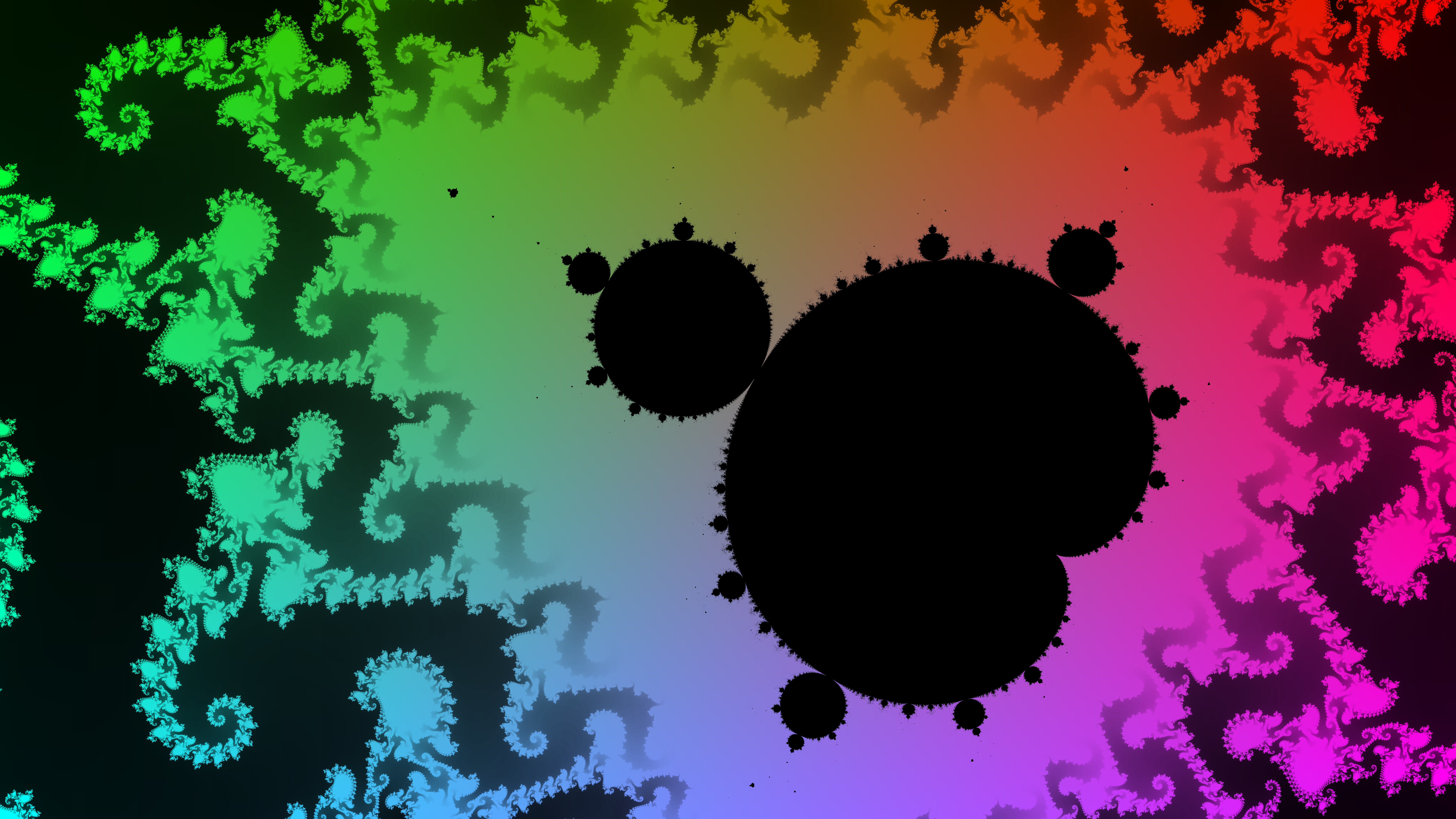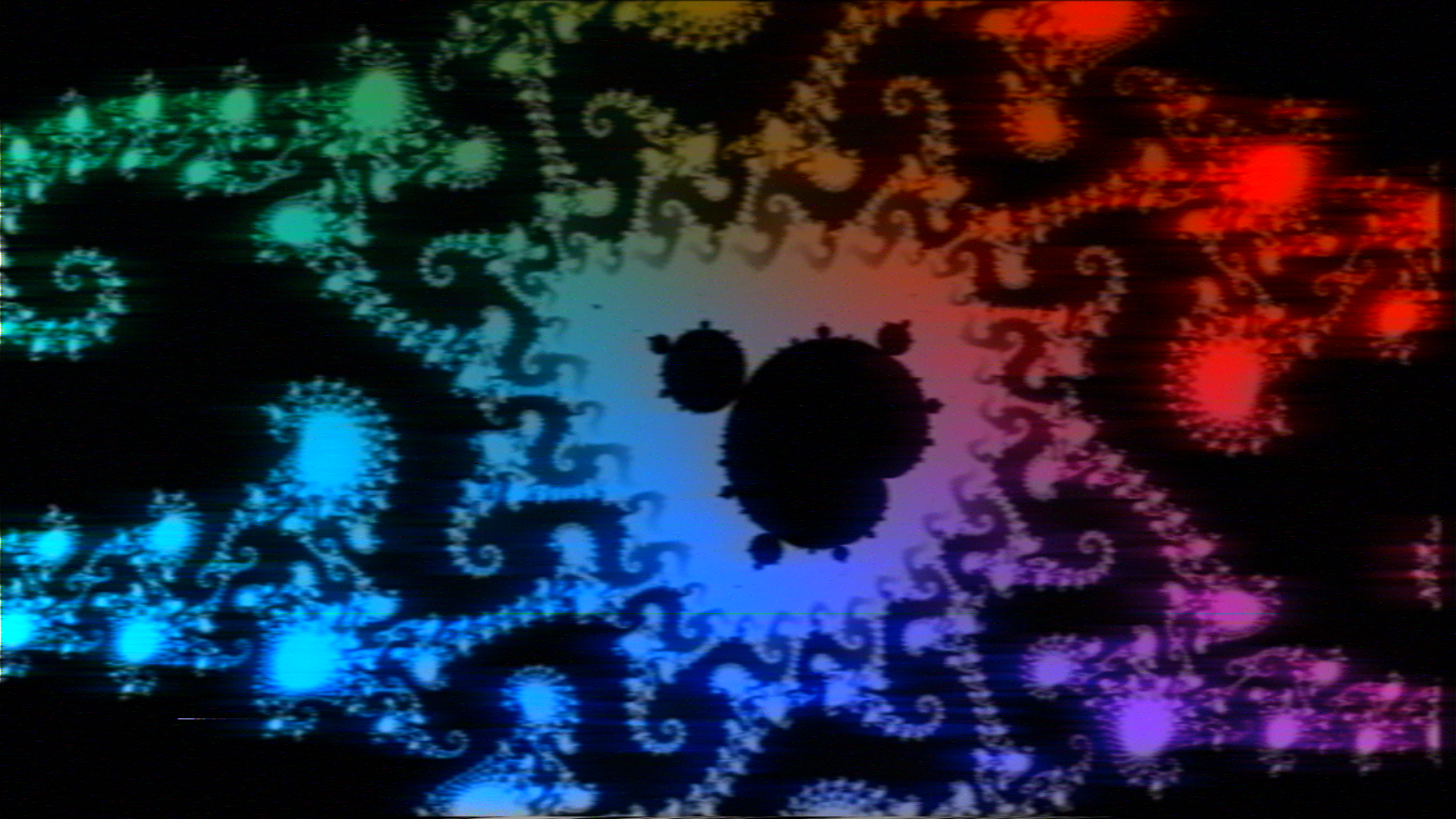A bunch of Mandelbrot Set renders
What’s a Mandelbrot Set
A fractal. A cool fractal. I really like fractals. Basically you have this equation:
\[z_{n+1}=z_{n}^2+C\]
By its look, it’s not really that hard now is it? Lets say, you:
-
Evaluate this expression like 5 thousand times (the more the better) for each value of \(C\) on the complex plane (which basically allows us to pack two numbers into a single variable, very useful and makes the expression above look much more readable and less scary);
-
Check if the resulting value of \(Z_{n}\), or actually its magnitude (in case of complex numbers, remember: we’re packing two in one) goes up to infinity (actually past \(4.0\) but we don’t talk about that);
-
If it doesn’t, you paint the pixel for the value of \(C\) black, otherwise you either paint it fully white, or (in my case, I like my fractals shiny and colorful) add some coloring;
And when you do that, you get this:

Zooming in
It’s a fractal though, so we can infinitely zoom in:

Lets zoom in a little bit more, say uhhh.... to \(984609\):

Now what pixelated mess of fractals do we have here?
Pixelation
As it turns out, 32-bit floating point precision is not quite enough to do large zoom-ins, so lets render the exact same zoom factor with double-recision (64-bit) floating point numbers:

There we go, now it’s much less pixelated…
Some pictures
I passed these through RITEG and in my opinion these are the prime wallpaper material:
A video
Comparing zoom factors is better when actual zoom-in is animated, so here’s a YouTube video:



